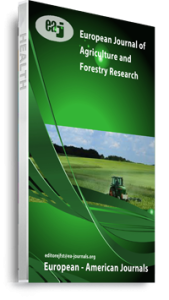The study on impacts of insects associated with five varieties of sesame, Sesamum indicum L. (pedaliaceae) was conducted at the Teaching and Research Farm, Federal University Wukari, in 2014 and 2015 cropping season. Insect species found on the crop at reproductive phase were sampled fortnightly. Phytophagous sesame pests identified were reported in part A of the study. This study evaluates diagnostic symptoms and severity of diseases vectored by these pests as viral leaf curls, cercospora leaf spots, galled capsule, bacterial blight and phyllody. The parameters measured were, Agronomic parameters and yield parameters. Results clearly shows, severity of these disease symptoms across the varieties, with E-8 variety being most tolerant (0.97±0.15) to leaf curl disease. Highest susceptibility was recorded in Yandev 55, for Cercospora leaf spots (1.93±0.06), galled capsule (5.79±0.64) and phyllody (1.96±0.23). NCRIBEN-01M gave the highest yield index, 6.09±0.36, and 5.99±0.12 for viable capsule counts. Average seed yield of 15.13±0.64kg/ha was recorded by the same variety in 2015 season, while ICEASE-00018 gave peak 1000 seed weights 1.69±0.07g and 1.88±0.13g in both seasons. The agronomic parameters show higher plant population (9.93±0.22 and 11.06±0.33) in ICEASE-00018 variety. Yandev 55 gave, 11.66±0.33cm and 11.40±0.23cm as peak plant height, while ICEASE-00018 gave 2.30±0.12 number of branches in 2014, but were not significantly different between varieties in 2015. NCRIBEN-O1M recorded peak stem girth, which however were not significantly different across the varieties. Yandev 55 had more leaves but was not significantly different across the varieties, and leaf area 8.04±0.47 and 8.46±0.52 was highest in same Yandev 55. The implications of these findings were further discussed.
Keywords: Induced resistance, Sesame, harvest index and diseases, sucking pests

